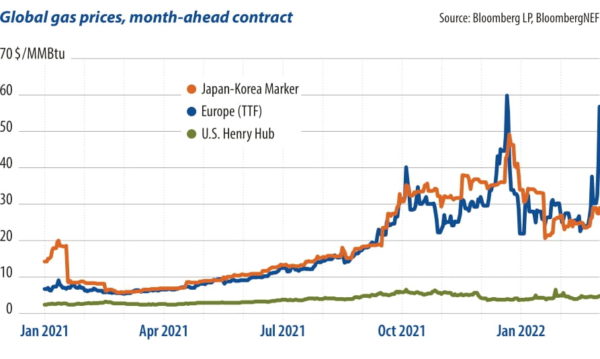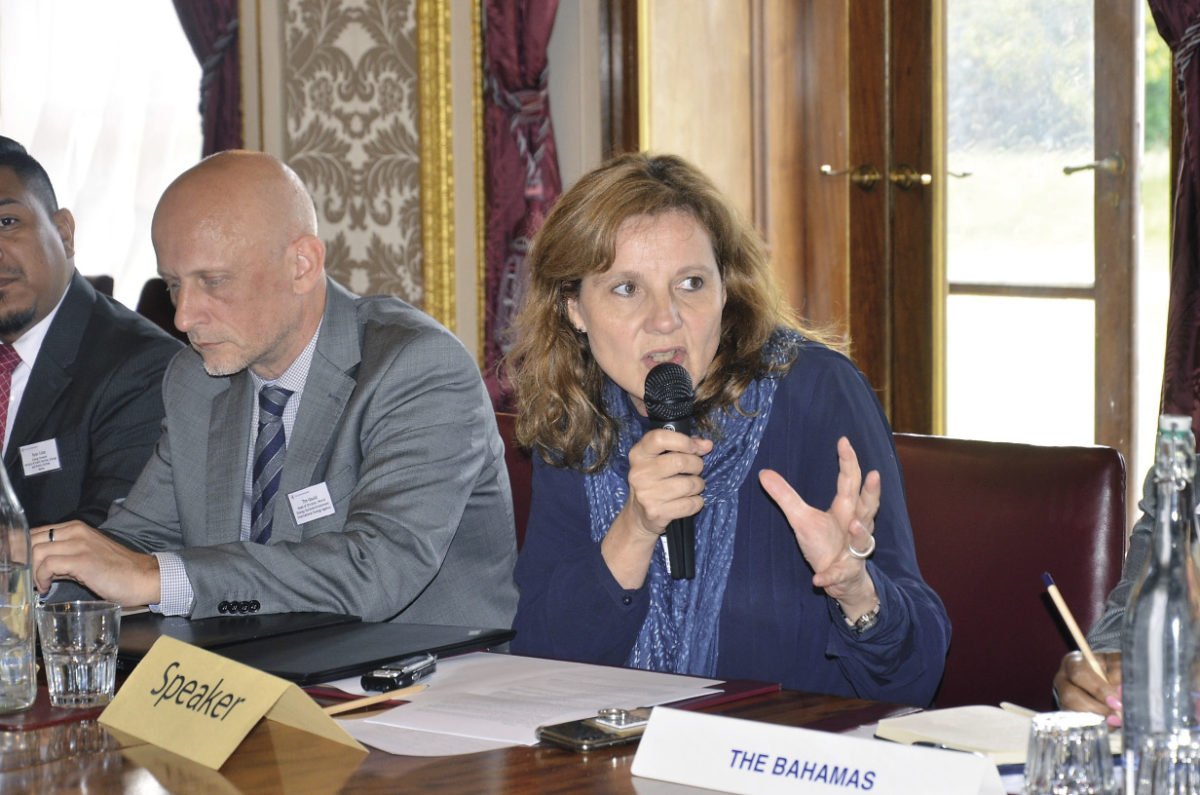Conflict sharpens the senses, and current geopolitical tensions have increased the focus on medium- and long-term alternatives to fossil fuels, particularly those imported from Russia to Europe. EU institutions, countries, and companies have recently visited Qatar, Australia, and the Arabian Peninsula to speak about gas and hydrogen collaboration.
International Renewable Energy Agency (IRENA) director Rabia Ferroukhi told pv magazine that regions with hydrocarbon expertise have an advantage in the hydrogen sector. “Much of the distribution infrastructure and the knowledge capital can be repurposed to establish and scale hydrogen production, export, and use capabilities. That being said, we believe green hydrogen will underpin the global energy system in the decades ahead – so the key resource will be large-scale renewable energy potential, able to generate power at competitive costs.”
The interest in regions with high solar radiation is growing accordingly. Gniewomir Flis, an associate at London-based Energy Revolution Ventures, said Africa generally has “enormous potential” to produce hydrogen at a lower cost than the EU. Current fossil fuel prices make that potential even more alluring.

Ending fossil reliance
If the rise of oil and gas prices ends up being structural, the first element of the periodic table should be competitive with fossil fuels sooner than previously predicted. BloombergNEF’s Meredith Annex said Russia’s invasion of Ukraine has already tripled the price of natural gas-derived products like ammonia. “This has opened the door for green hydrogen and ammonia produced from renewable electricity to compete with unabated natural gas-based processes,” said Annex.
On the other hand, the pandemic-related logistical disruption, geopolitical tensions, and scarcity of crucial components for renewable projects could slow down hydrogen developments. Strong demand for PV modules or wind turbines, for instance, could push prices of some critical raw materials even higher. Eventually, this might open the doors to boom-and-bust cycles.
“Realizing trade between the two continents is vulnerable to political stability and to the willingness of the EU to provide low-cost finance to African partners,” Flis said. Institutional and financial support can provide the needed certainties for the hydrogen sector in the second biggest continent on earth. But the support has to be part of a shock-proof long-term strategy, which factors in both African and European risks.
On the African side, local experts who asked not to be named said that the resource curse might benefit only the elite, not the average citizen. Hydrogen exports could also strengthen African currencies, making imports more expensive. On the European side, unexpected geopolitical events could easily change EU priorities.
Bucharest-based energy analyst Christian Tataru explains that all the different components of this energy-geopolitical puzzle – security, political stability, energy prices, and sustainability – must be tackled together.
“Supporting the development of a green hydrogen economy in Africa offers significant economic benefits, but it must form part of a more comprehensive energy transition program,” confirmed Ferroukhi.
The question now is how to translate political support into action. According to IRENA’s director, Europe can assist these projects by offering guaranteed offtake agreements with African countries for their green hydrogen production. That would ensure an income stream while driving the financing costs down and improving production costs. “Capital grants could be proposed to support the investment, together with concessional loans.”
Transport options
Several companies are looking into transportation options via pipelines connecting Africa and Europe. Nonetheless, if new interconnections will most likely take years to complete, existing ones are needed to bring methane to Europe.
“Pipelines are theoretically the cheapest form of hydrogen transport, but in practice, it’s still unclear how much of the European gas pipeline network will be repurposed to hydrogen and, more importantly, when. This decade, most hydrogen will be traded either blended with natural gas in pipelines or via ship, whether that’s through ammonia or different carriers. We’ve recently seen an announcement of a project looking to ship e-methane,” Flis said.
So far, the largest African hydrogen projects are being built in a handful of countries. “We’re seeing interest all across Africa but particularly in the region from Morocco and Mauritania, and south from Namibia and South Africa,” Flis concluded.
Business case
Europe will not necessarily import hydrogen via pipelines or tanks. The continent might also import other derivatives or even energy-intensive products, like steel. However, African countries must strengthen their processing capacity to move their production up the value chain. “Only when economic activity moves from exporting raw materials to higher-value products can African countries build greater resilience into their economies,” said Ferroukhi.
Michaël Tanchum, an associate senior policy fellow in the Africa program at the European Council on Foreign Relations (ECFR), agrees. He told pv magazine that appropriate business models are crucial. “Cooperation should address the uses of hydrogen for a variety of sectors to enhance value-added production in North Africa. Morocco’s HEVO Ammonia project, expected to begin development this year, and to produce 183,000 tons of green ammonia per year by 2026 is a good example,” he said.
According to Tanchum, the Moroccan project is also interesting for local usage. Morocco, one of the world’s top five fertilizer exporters, has few natural gas resources. It now seeks to replace ammonia from imported natural gas with green ammonia.
“The project’s green ammonia output would be equivalent to about 10% of Morocco’s current fertilizer production input requirements,” Tanchum said. “Thus, Morocco has the option to use hydrogen as an input to enhance its industrial production as well as a storage and transport mechanism to export its solar power. The nations of North Africa do not simply want to be the green energy battery of Europe,” he added.
Gains of European companies would remain significant. “The $850 million plant is being developed by Ireland-headquartered hydrogen technology firm Fusion Fuel using its HEVO proprietary technology in conjunction with the Consolidated Contractors Company. The trading firm Vitol has signed an MOU to manage offtake from the HEVO project to market green ammonia in Europe and other nearby markets,” Tanchum said.

Timing is everything
Currently, there is a flurry of initiatives about Africa-Europe hydrogen collaboration. Many, though, are just in their infancy. “We can see across forums and within the mandates of certain energy development programs that hydrogen has come into focus. Maturity of sectors is slower in Sub-Saharan Africa, so it will likely take several years before we see progress on transactions outside of jurisdictions that are most often first-movers, like South Africa or Kenya,” said Jeannetta Craigwell-Graham, a Denmark-based energy consultant focused on East Africa.
Experts agree that the bulk of the projects will be operational in the next decade. Some African projects target first exports as soon as the second half of the 2020s. The projects are then likely to ramp up significantly past 2030. Derivatives like green fertilizer or shipping fuel could already be exported within five years. In contrast, green hydrogen is expected to take longer, perhaps five to eight years, African experts who asked not to be named told pv magazine.
Continental coordination
Recent developments in the hydrogen sector suggest that co-location of green hydrogen production and consumption are key factors to evaluate hydrogen projects in many regions, especially in Europe, but also in India and Australia. Transportation costs are indeed a key element to assess the potential of hydrogen projects.
In this light, another opportunity comes from intra-regional trade in Africa, which currently accounts for only 16% of the continent’s total trade. Experts expect to see more intercontinental trade relationships, also in the hydrogen sector.
Even more importantly, African countries could collaborate to produce hydrogen. “There are also very promising pan-African initiatives to support the development of a hydrogen economy, such as the African Hydrogen Partnership – a trade association dedicated to the deployment of green hydrogen and fuel-cell technologies,” said Ferroukhi. The partnership aims to construct renewable energy hubs – large-scale power-to-gas plants – located in metropolitan areas, ports and mining centers along trans-African highways.
Countries such as Egypt, Mauritania, Morocco, Namibia, Nigeria, and South Africa have already developed green hydrogen strategies and are demonstrating the potential for production at globally competitive costs. Each country’s approach is different and tailored.
What’s common, though, is the centrality of new renewable investments. If electricity from renewable sources has other uses such as providing access to electricity, then it should not be converted into green hydrogen as a first priority, experts agree. “The production of green hydrogen is highly electricity intensive,” Ferroukhi said, recommending countries to first improve energy access. IRENA offers a framework to guide decision making that reflects global best practice.
Geopolitical concerns
Apart from considerations on price, the Russian invasion of Ukraine will impact hydrogen developments in several other ways. “[The invasion] could result in accelerated partnerships with African partners, and it could also lead to more focus on hydrogen production within the EU. Probably a mixture of both,” Flis explained.
But not everybody agrees. The strategic competition between Europe and China, for instance, is a factor that has to be considered. Given the proximity of China and Russia, the collaboration could lose steam. “China has taken over most bilateral trade with Sub-Saharan Africa. If this trend continues, and China continues to align with Russia on certain policy matters, this could affect EU/US willingness to share technology and collaborate on development of the sector,” noted Craigwell-Graham.
As shown by developments over the last days, these considerations might change quickly. Geopolitics also play a key role in the hydrogen sector. Adding to this, a system has to be in place to allow technical aspects, ranging from certification to digital solutions for verification, also deploying to blockchain.
This content is protected by copyright and may not be reused. If you want to cooperate with us and would like to reuse some of our content, please contact: editors@pv-magazine.com.
